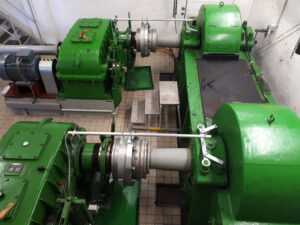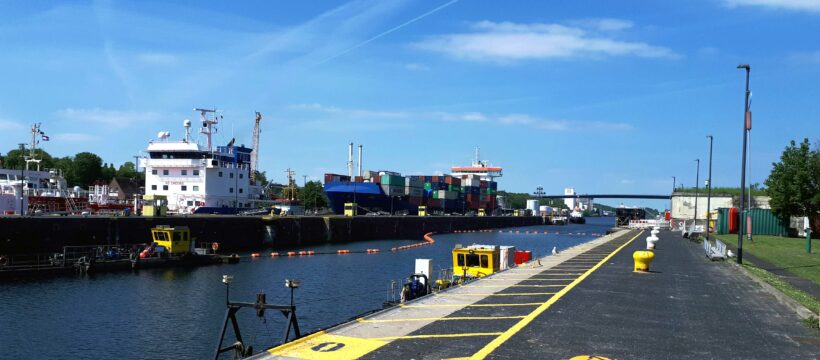With the passage of 90 ships each day, the Kiel Canal in Germany is a key element of the trans-European transport network. The experts are planning the modernization of the Kiel-Holtenau locks during ongoing operation.
As the busiest artificial sea route in the world, the 98-km Kiel Canal plays an important role in freight traffic. It has connected the North Sea and the Baltic Sea since the end of the 19th century, and now averages 90 ships a day and 100 million tons of goods per year.
One of two approaches to the canal is the Kiel-Holtenau lock. It consists of two locks. Currently, only the larger lock (310 m long by 42 m wide) is operational, as the smaller one is under construction. But there is also a need to modernize the large lock.
The Kiel Canal Construction Authority commissioned the experts from Tractebel Hydroprojekt in Magdeburg, Germany to plan a new sluice drive variant to be used for the entire lock system. The task is to develop a new drive by the end of 2025 that is reliable, fail-safe and low-maintenance. The concept will provide for two drives for each lock gate so that replacements are available at all times in the event of a malfunction.

New sluice drives will improve the entire lock system
Preliminary investigations during operation
For the planning phase, the experts examined the specifications of the existing plant dating from 1967 and compared them with measurement data from ongoing operations. The findings form the basis for further planning steps.
A main challenge during these preliminary investigations is to keep the lock operational with minimal downtime. To accomplish this, the experts called on measurement specialist Althen Sensors & Controls. Althen developed and carried out project-specific individual measurement solutions to determine, for example, exact load peaks. These real measured values serve as a basis for precisely dimensioning the new sluice drives and identifying and eliminating any problems that may arise during the planning phase.
The experts are currently drawing up the approval documents for the construction phase. They will then prepare the tender documents and advise the client throughout the Europe-wide bidding process.
 | „A smoothly functioning waterway between the North Sea and the Baltic Sea means shorter and therefore more environmentally friendly transport routes. We are planning a modern, durable, energy-efficient and fail-safe operation that uses eco-responsible lubricants and can perform its task reliably and effectively.“ says Tobias Schaulat, project engineer at Tractebel Hydroprojekt. |
Company information
As one of the world’s largest engineering companies, Tractebel offers pioneering strategies for a climate-neutral future. Around 5,000 employees develop engineering solutions for complex projects in the fields of energy, water and urban infrastructure. Tractebel customers benefit from 150 years of experience and the local know-how of experts in Europe, Africa, Asia, the Middle East and Latin America. Revenue generated in 2020 was € 581 million. Tractebel is part of the ENGIE Group, an international low-carbon energy and services company.
Contact
Tractebel Engineering GmbH
Sabine Wulf, Head of Communications & CSR
Friedberger Straße 173
D-61118 Bad Vilbel
Phone: +49 (61 01) 55 – 0
info-de@tractebel.engie.com

